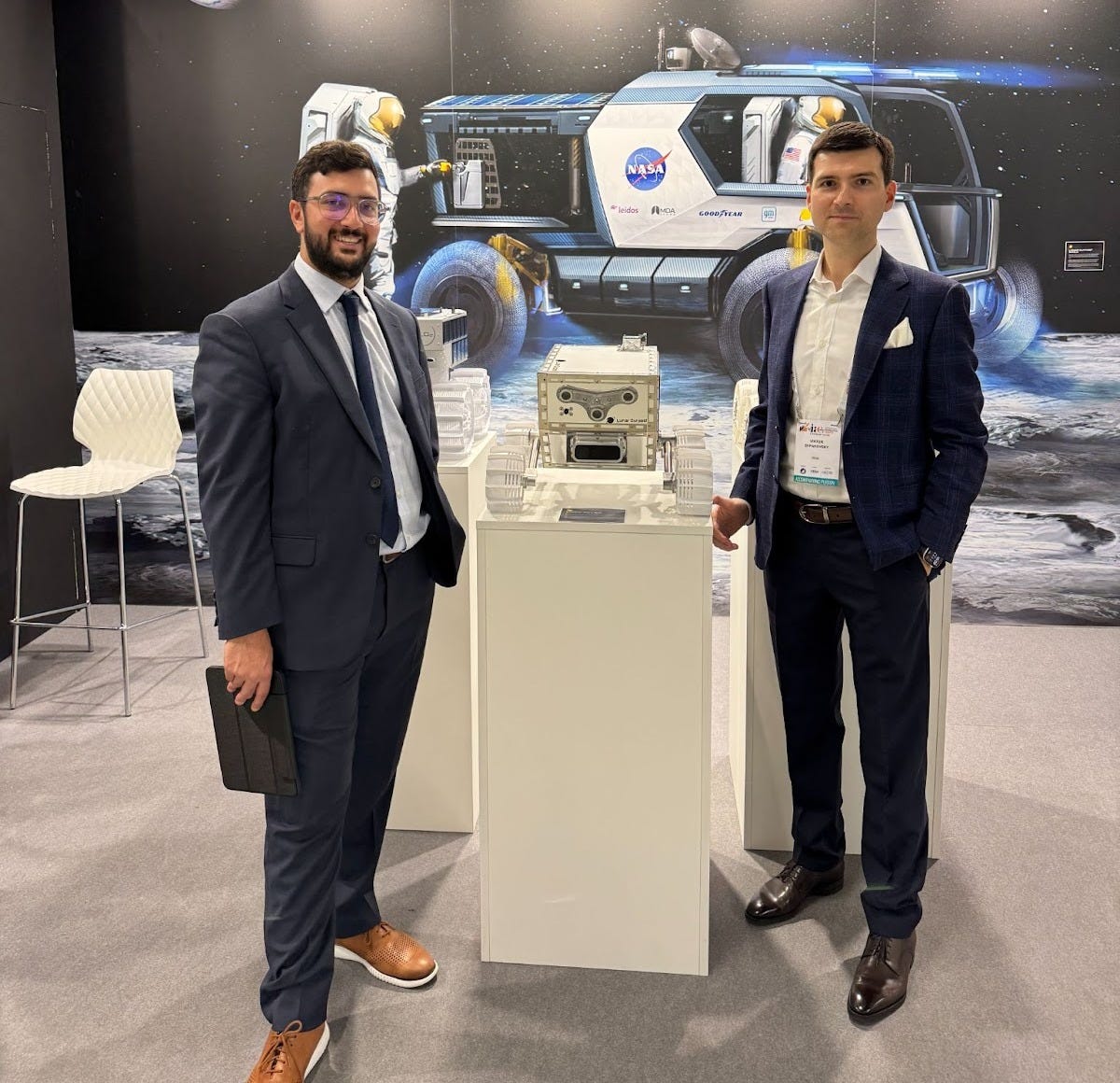Spotlight: Viktor Shpakovsky - Founder and General Partner @ Beyond Earth Ventures
Learn about Viktor’s journey from fintech to deep tech—and from angel investor to VC—after backing 100+ startups and focusing exclusively on deep tech since 2020.
Issue: 130. Subscribers: 60,720.
What inspired you to launch Beyond Earth Ventures, and how did your journey into space tech investing begin?
I’ve always been passionate about both investing and physics — the intersection of capital and curiosity. I started investing in early-stage startups in 2017, initially as a generalist. That early experience led to several successful exits and helped me understand how to spot exceptional teams and scalable ideas. But by 2020, I began focusing almost exclusively on deep tech — especially space — because it aligned with both my intellectual interests and long-term conviction. Space tech is no longer science fiction; it’s becoming a foundational industry. I also felt a strong sense that now is the right time to start deploying capital into this area — the market, technology, and talent are aligning in a way we’ve never seen before. That realization led me to launch Beyond Earth Ventures, an investment firm focused on the next generation of founders building technologies that will shape both the Earth economy and the space economy.
From angel investor to GP — what were the pivotal moments that shaped your transition to leading a dedicated deep tech fund?
I realized that to truly support the founders I believed in — those building generational, world-changing companies — I needed to do more than write small angel checks. I wanted to bring more capital, more strategic support, and a long-term commitment to help them scale. Launching a dedicated fund allowed me to back these visionary teams with conviction, lead rounds, and create a platform that goes beyond funding — one that actively shapes the future of deep tech and space innovation.

What does “Beyond Earth” really mean to you — philosophically, commercially, and strategically?
Philosophically, it reflects a belief that space is not just a destination, but a new economic domain. Commercially, it’s about investing in the infrastructure and dual-use technologies that will power trillion-dollar industries on Earth and beyond — energy systems, AI-native robotics, and high-performance materials. Strategically, it means placing global bets early and supporting founders who can build across geographies, including the US, UK, EU, MENA, and APAC.
How do you see the commercial space industry evolving in the next 5–10 years, and where do you believe the biggest investment opportunities lie?
We’re entering a decade of transition from exploration to infrastructure. I see huge opportunities in space situational awareness, in-space servicing, and lunar logistics. Private capital is beginning to replace government grants as the dominant growth engine. Our job as VCs is to identify founders who can scale in this new environment.
In your view, what differentiates successful space tech startups from those that never lift off?
The most successful founders combine technical depth with a clear go-to-market strategy — whether that’s early government contracts, dual-use applications, or strategic partnerships. Space is hardware-heavy and capex-intensive, so timing and capital efficiency are key. We look for teams who can iterate fast, even in long development cycles, and who understand how to translate a breakthrough into revenue.
How does Beyond Earth Ventures evaluate frontier companies working on lunar infrastructure, in-space manufacturing, or nuclear propulsion?
We break this down into four layers: team, tech, timing, and traction. We ask: Is the founding team uniquely qualified? Is the tech differentiated and defensible? Is the timing right from both market and geopolitical perspectives? And do they have signs of early traction — whether that’s a government contract or commercial opportunities?
We also apply a dual-lens approach: what’s the in-space use case, and what’s the terrestrial upside? To sharpen our investment decisions, we leverage AI tools and a data-driven approach to analyze sector trends, technology readiness levels, and market timing. This allows us to make high-conviction bets faster and with greater clarity in a complex, rapidly evolving domain.
Beyond capital, how do you help space founders build globally competitive companies?
We support founders on three fronts: strategic positioning, dual-use commercialization, and global expansion. We help them navigate government partnerships, introduce them to top-tier co-investors, and advise on how to structure their business for international scale, including IP strategy, defense compliance, and multi-market GTM. We’ve built a syndicate model that has supported our portfolio with flexible capital when needed.
You’re investing in post-AI deep tech — what does that mean, and how do you see AI amplifying industrial sectors like robotics, energy, and aerospace?
Post-AI deep tech means we’re investing in companies that use AI as an enabler, not as a product. AI is unlocking new capabilities in autonomy, design optimization, fault prediction, and energy efficiency. But it’s not enough to build another LLM. The real value comes from applying AI to hard problems in physical domains — like robotic manipulation in space, predictive maintenance for satellites, or energy routing in microgrids.
Which recent technologies or startups have impressed you most in their dual-use (space + terrestrial) potential?
Several. Zeno Power is developing nuclear batteries with applications in both seabed and space. Lunar Outpost is building lunar mobility systems that can also serve terrestrial industries like mining. I’m also watching Tandem PV, a company working on high-efficiency perovskite solar panels — a promising technology for lightweight, scalable energy solutions that could benefit both Earth-based and orbital power systems.
You personally have invested in over 100 startups, including space unicorns and breakthrough deep tech. What’s your core philosophy when backing a founding team?
I back missionaries. I look for teams with a long-term vision, a unique insight into the market, and the ability to attract top technical talent. In deep tech, you often need to survive three to five years before hitting scale, so we prioritize resilience, creativity, and the ability to execute under constraints.
What are the most misunderstood trends in space investing today, and how are you trying to change the narrative?
There’s a misconception that space investing is only for billionaires or requires 15-year exits. The truth is: capital cycles are shortening, customer demand is diversifying, and revenue-generating models are emerging. We’re changing the narrative by showing how space can deliver both impact and returns, especially when it converges with AI, defense, and sustainability.
What many investors still overlook is that IRR in deep tech is now often outperforming traditional tech. With the right timing and support, these companies can achieve strong commercial traction while creating lasting technological moats. It’s no longer about moonshots — it’s about high-performance, real-world execution.
What do you read to stay on top of the space tech industry?
I try to stay close to both macro trends and company-level movements. I read Payload, Jatan’s Space, and Space Ambition — they’re great for spotting early signals across the ecosystem. I also use PitchBook for sector-level data and follow NASA and BryceTech reports for deeper insights on funding, technology maturity, and industry dynamics. I pay special attention to who’s winning which contracts — especially from NASA, DoD, and commercial primes — because that often tells you more about real traction than press releases do. On the commercial side, I track quarterly reports and investor decks from public space companies, and I study internal updates from startups, particularly around technical milestones and customer pilots. It’s that combination of high-level context and deal-specific signals that gives me the edge when evaluating opportunities.
For someone new to deep tech, how should they start investing?
A good starting point is to back deals through syndicates — this gives you access to vetted deal flow and exposure to how experienced investors evaluate deep tech. It’s also a way to build conviction gradually. Deep tech isn’t just about the product; it’s about timing, tech readiness, and customer validation. Join communities, read scientific papers and policy reports, and follow early government or defense partnerships. You’ll quickly see that traction in deep tech looks different — it could be a NASA contract, a non-dilutive grant, or a multi-year pilot with a national lab. The more you learn to interpret these signals, the better investor you become.
How do you personally stay inspired to invest in technologies that may take 10+ years to mature?
Because I believe in compounding — not just capital, but conviction. These technologies have the power to transform industries, nations, and futures. When you work with world-class founders building for a 20-year vision, it’s impossible not to stay inspired.
Thank you, Viktor, for your time and for sharing your incredible journey. We hope it inspires others to explore the exciting world of deep tech investing.
This article is for informational purposes only and does not constitute an offer to sell or a solicitation of an offer to buy any securities. Investments in private funds are offered only to accredited investors through official offering documents.








